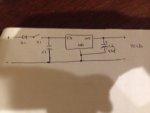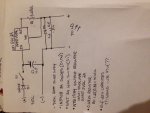- Joined
- Aug 30, 2015
- Messages
- 6
- Points
- 0
I know a lot of people buy drivers but I'm more interested in the electrical circuitry in building lasers . I recently built a 0.8mA red laser and a 1.25A blue laser with a m140 diode. I want to build a driver that can operate at 2.0A because these m140s can be pushed to 1.8A comfortably . The lm317t is only capable of 1.5A output so I bought a NTE1934 capable of 5V 2A output . I would like some sort of schematic before I attempt to build this . I have pictures of my drawings but can't figure out how to post them on here I can email them to anyone willing to help thanks





